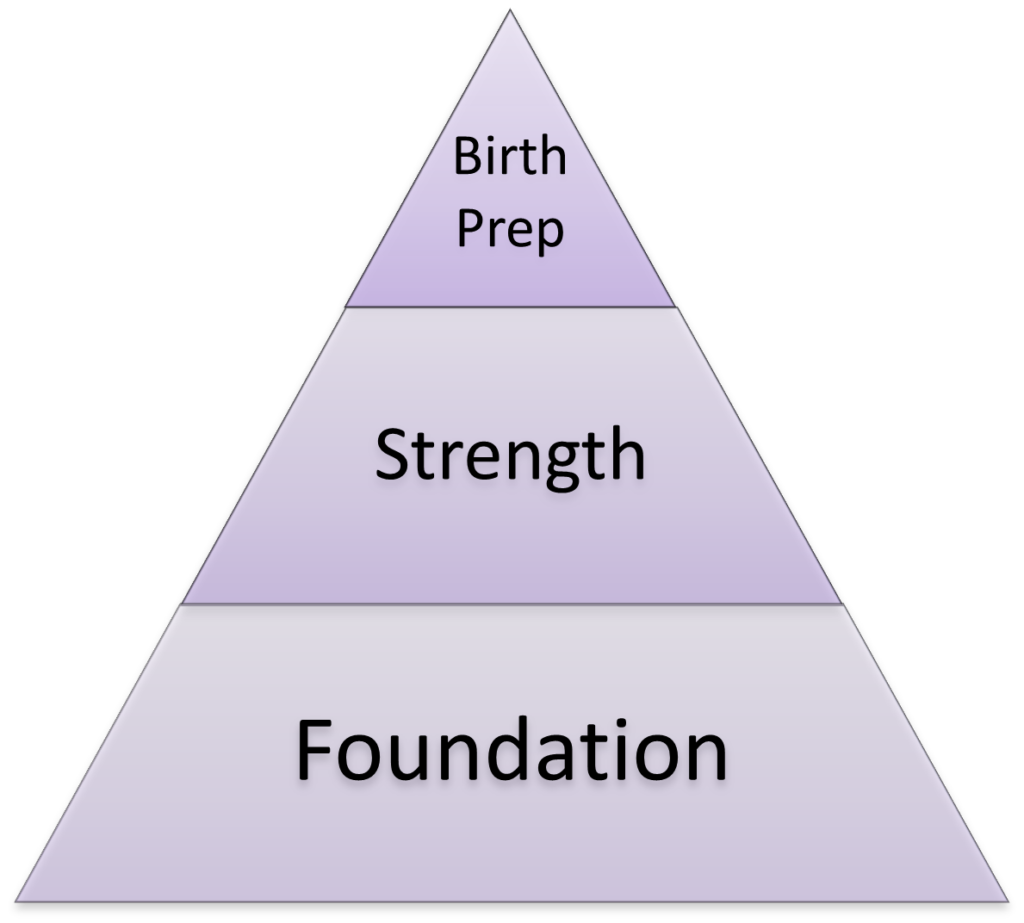Your long-time client just told you she was pregnant. Do you automatically think to reduce the loads she was lifting? Do you worry about having her use weights at all? This is a natural tendency because conventional guidance has always said that pregnant people should limit physical exertion when strength training to minimize stress to the body.
This has been the fallback position of the medical community for decades. We often hear doctors advising their patients to reduce loads or focus on bodyweight only exercise during pregnancy. However, under scrutiny, it reveals a major flaw. In this piece, we show how this approach can leave clients less prepared to manage the physical challenges of pregnancy, which could lead to pain, discomfort, or even injury.
Why “Limiting Stress” is Less Effective
The guidance to limit stress to the body is often given to mitigate potential pains & injuries that could arise from the increased stress that is placed on the body during pregnancy. While mitigating pain & injury should be a critical goal of any prenatal training program, the graph below illustrates how the “low stress approach” is not the most effective strategy to achieve this goal. In fact, it could even increase the risk of pains & injuries.
This “strength-to-weight” graph below shows the following:
- Horizontal axis tracks the duration of pregnancy (in months) from conception to birth
- Vertical axis tracks weight in pounds
- Pink line illustrates an individual’s weight in pounds
- Blue line illustrates the weight an individual can lift (in pounds)
NOTE: The actual numbers on the vertical axis are not important. The trend is what’s important.
Strength-to-Weight Trend

For illustration purposes, let’s say this graph is for your pregnant client, Jane. She begins her pregnancy at 120 lbs and ends at 150 lbs (pink line).
At the beginning of her pregnancy, Jane could deadlift 100 lbs (blue line). After following the advice of those espousing a low-intensity approach to prenatal exercise, Jane stops lifting heavy weights and adopts a body-weight-only strategy. By the end of pregnancy, she is only able to squat 65 pounds because her muscles have become deconditioned.
The theory of progressive overload says that muscles must be increasingly stressed to tolerate greater amounts of stress. In other words, if we do not continue to stress our muscles with greater loads, then they will not change and adapt to tolerate greater levels of stress.
Therefore, in this example, Jane is now weakest when she is at her heaviest. This can lead to movement compensations, and a greater risk of experiencing pain or injury.
Think about it. The healthy weight gain guideline for a single pregnancy and normal BMI is between 25 – 35 lbs, and 47% of people gain more than this (Deputy et al, 2015). That’s a lot of additional weight to carry around (not to mention the other physical and physiological stresses that pregnancy brings). By “stressing” muscles via moderate to higher-intensity loads, muscles will adapt to handle the greater “load” of pregnancy weight gain. This results in fewer pains, easier movement, and more energy (because the body doesn’t have to work as hard to manage the added weight).
The First Step to Effective Strength Training
While the illustration above might help you appreciate the benefits of a “higher-intensity” approach, it is important to go about this in the safest and most effective way so that you can reap all the benefits of strength training while mitigating the risk of pain or injury. This means that — prior to adding load — it is imperative to first establish a solid foundation upon which to build. This means mastering the fundamentals of neutral alignment, deep core activation, and proper movement mechanics.
We have developed a 3-stage Prenatal Training Framework (pictured below), with each stage consisting of certain objectives or skills that you master. As you can see, the first (important) stage is Foundation, where we work on mastering many of the fundamentals mentioned above — prior to progressing to the Strength Stage.

Learn the Complete Framework
In our Pre/Postnatal Performance Training Specialist Course, you will learn the full details of our Prenatal and Postpartum Frameworks — including how to utilize them to design pre and postnatal programs for clients of all stages and fitness levels. Discover everything included in this course, along with the additional resources and marketing support you can benefit from as a ProNatal Certified Coach.
Or, if you’re a Group Fitness Instructor just looking for the basics to better support the pregnant & postpartum members who attend your classes, check out our simple (but powerful) mini course: Pre/Postnatal Education for Group Fitness Instructors.
